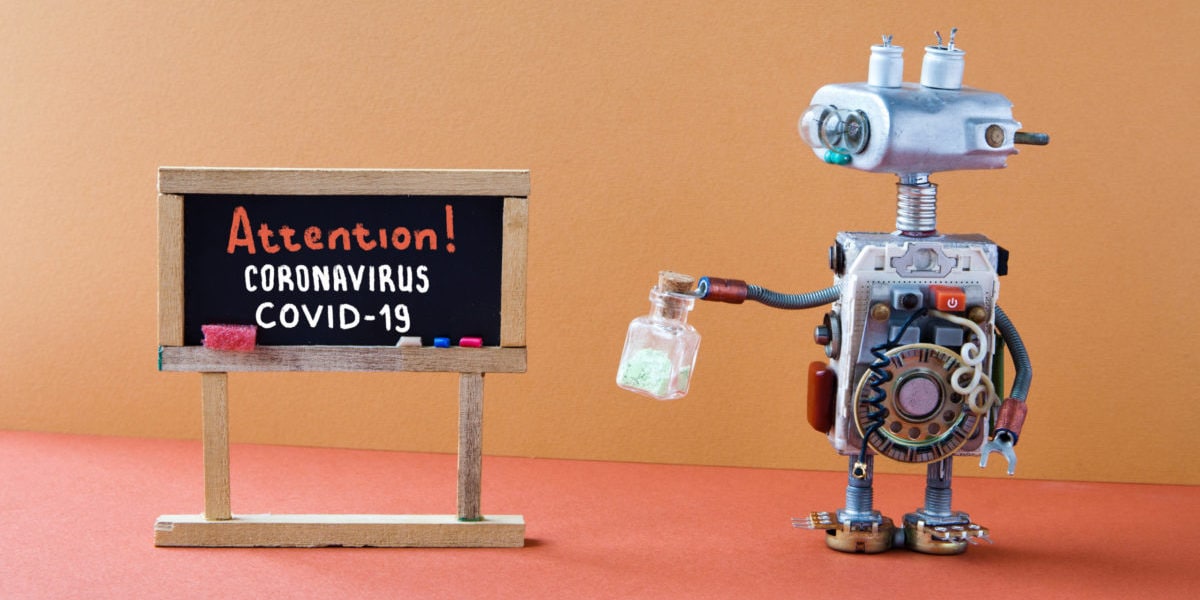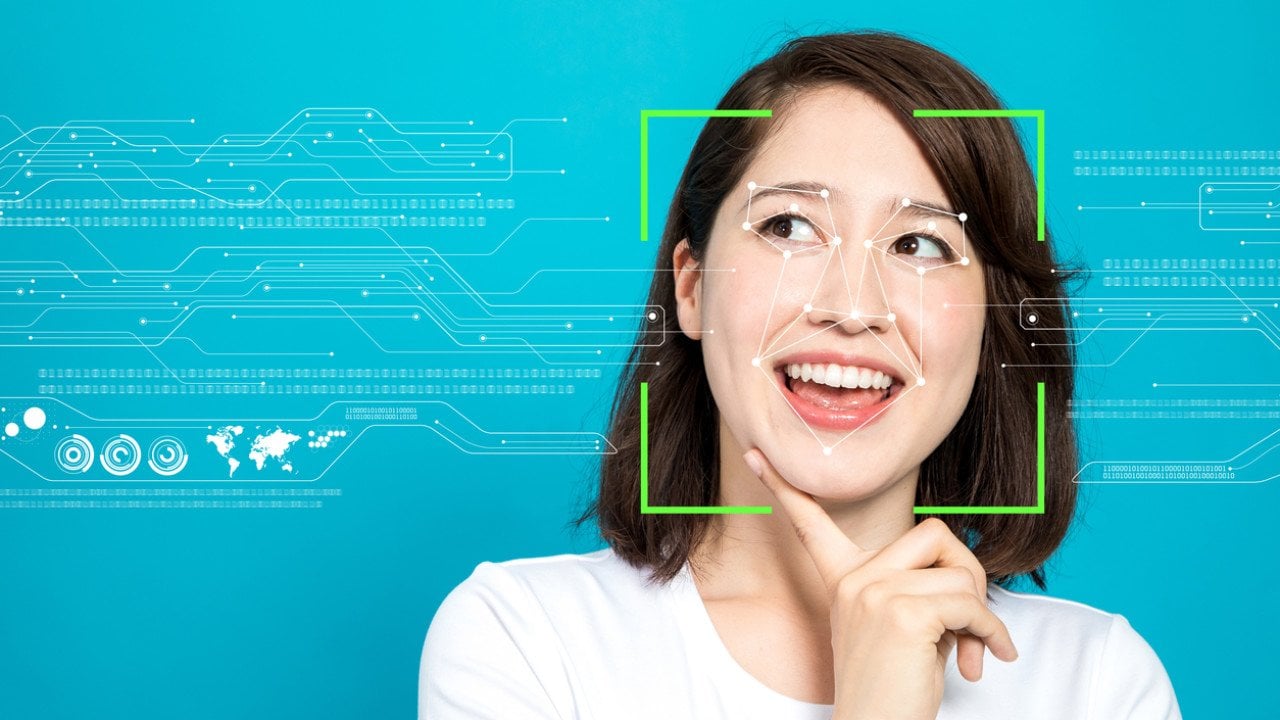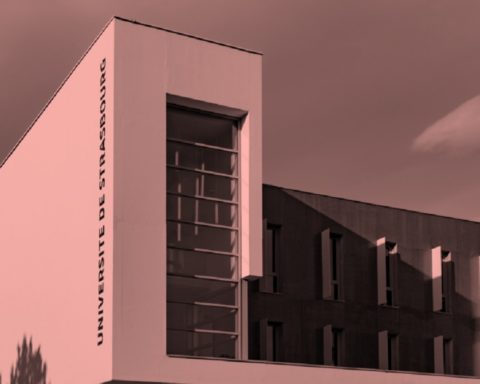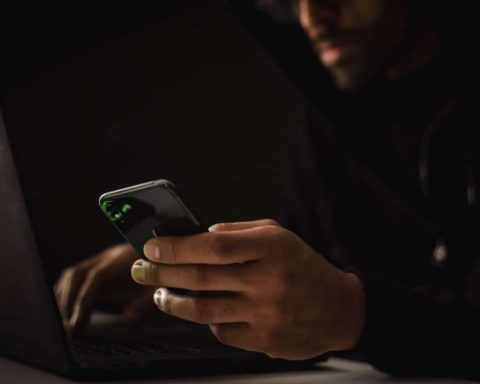Médecine, biologie, génétique, pharmacologie, zoologie, mais aussi sciences de l’environnement sont bien sûr en première ligne dans le combat contre le Covid-19. Mais, face au coronavirus, et à la différence des précédentes grandes épidémies qui ont frappé la planète depuis le début de ce siècle – grippe aviaire, SRAS, grippe HINI, Ebola, le monde a pour la première fois mobilisé massivement un nouveau type d’outils appelés à jouer un rôle majeur dans la prévention et la lutte contre les agents pathogènes de toute nature, les outils robotiques et numériques.
Dans la lutte mondiale contre la pandémie de Coronavirus, toutes les ressources humaines, scientifiques et technologiques ont été mobilisées et, chaque jour, de nouvelles et précieuses connaissances s’accumulent sur la nature de ce déroutant virus, bien plus complexe qu’on ne le pensait. De nouvelles solutions thérapeutiques sont développées et testées et de nouveaux outils sont utilisés pour combattre sur tous les fronts cet adversaire invisible mais redoutable.
Les drones en ordre de bataille
En Italie, à Trevolio, petite commune dans le Nord du pays durement touchée par le Covid-19, un drone muni de capteurs thermiques mesure la température des habitants à distance. « Nous faisons monter le drone à 25 mètres et quand le drone repère des personnes, on le fait descendre pour établir la température des personnes avec davantage de précision », explique Matteo Copia, maire de la commune lombarde.
Grâce à cet outil simple et flexible, la police peut contrôler à distance avec précision et efficacité si une personne à de la fièvre ou pas. En cas de « température corporelle qui semble anormale, nous envoyons une patrouille relever la température avec un thermomètre de précision pour établir si la personne se trouvait en quarantaine obligatoire qu’elle a violée, en auto-confinement dont elle est sortie ou si elle a des problèmes de santé », explique le Maire de Trevolio.
Soulignons que les habitants de Trevolio, face à l’hécatombe qu’ils ont subie, ont immédiatement accepté de bonne grâce d’être contrôlés grâce à cette technologie prometteuse qui est utilisée sous le strict contrôle de la police et des autorités municipales.
En France, de nombreuses villes, parmi lesquelles Paris, Marseille, Montpelier, Toulouse, Nice, Metz, Nantes et plusieurs collectivités territoriales, dont le Grand-Est, ont eu recours pour la première fois à des drones, à la fois pour rappeler aux populations les mesures de confinement, et repérer les comportements irresponsables de ceux qui bravaient le confinement.
Dans toutes ces villes, les retours d’expérience montrent que ces drones s’avèrent des auxiliaires très efficaces pour faire respecter le mieux possible les mesures de confinement.
Mais les drones peuvent également servir à lutter directement contre la pandémie. En Australie, des chercheurs de l’Université South Australia, en collaboration avec Draganfly, une société canadienne, ont mis au point un drone capable de détecter de manière fine des infections respiratoires dans des foules. Ces scientifiques et ingénieurs ont développé un algorithme de reconnaissance faciale capable d’inférer le rythme cardiaque et la fréquence respiratoire des patients à partir des images prises et transmises par ce drone. Ce logiciel très sophistiqué intègre également, grâce à des caméras thermiques, la mesure de la température et l’analyse automatique des gestes, tels que l’éternuement ou le mouchage. Ce système de détection dynamique aura la capacité de détecter un pourcentage significatif des personnes potentiellement infectées par Covid-19. « Notre drone et son logiciel seront des outils très efficaces de détection précoce du Covid-19, ou d’une autre épidémie et permettra de déterminer la proportion de personnes affectées dans une population », souligne le professeur Javaan Singh Chahl, qui dirige ce programme de recherche.
Une nouvelle génération de robots
En Chine, une équipe utilisant 14 robots a pris en charge, début mars, les patients de l’hôpital de Wuhan. Ces robots prenaient leur température dès l’entrée dans l’hôpital, et apportaient aux patients les repas et les médicaments. Ils étaient pilotés à distance grâce à une plateforme numérique et à des bracelets connectés, portés par les personnes hospitalisées, pour mesurer en permanence leurs paramètres vitaux.
Face à ce virus très contagieux, les hôpitaux se sont également tournés vers une nouvelle génération de robots, qui, j’en suis certain, va très vite se généraliser dans nos établissements de santé et nos Ehpad, les robots germicides, conçus pour désinfecter de manière rapide et complète chambres et locaux, en éliminant par différents moyens virus et bactéries. Deux des principaux constructeurs de ce type de robots, l’Américain Xenex et le danois UVD, ont d’ailleurs vu leurs commandes exploser au cours de ces dernières semaines.
En France, la firme Shark Robotics vient de tester avec succès un module de décontamination, le « Rhyno Protect » qui vient se greffer à l’un de ses robots tout-terrain, capables d’intervenir pour effectuer de nombreux types de missions de secours. Avec son réservoir de produit désinfectant, ce robot peut nettoyer 20.000 mètres carrés en trois heures, en pulvérisant des micro gouttelettes à 360 degrés, sans inonder la pièce.
Ces robots qui évitent au personnel humain d’être inutilement exposé à des agents pathogènes, représentent une véritable avancée en matière de désinfection profonde des lieux de passages, salle d’attente, couloirs, ascenseurs. Pour l’instant, pour des raisons de sécurité, ces robots ne travaillent que dans des lieux vides et ils sont équipés de capteurs qui stoppent leur fonctionnement au moindre mouvement. Mais dans un proche avenir, ces robots embarqueront suffisamment d’intelligence artificielle pour pouvoir évoluer en toute sécurité parmi médecins, soignants et patients dans des environnements complexes. Ils deviendront également bien plus polyvalents et pourront assurer de nombreuses tâches, ce qui allégera d’autant la charge de travail du personnel médical et hospitalier, qui pourra se recentrer sur ses fonctions essentielles.
En Italie, pays particulièrement touché par la pandémie, les hôpitaux ont également vu l’arrivée d’une autre catégorie de robots, plus spécifiquement chargés de la surveillance médicale et de la téléprésence. L’hôpital Circolo de Varèse, en Lombardie, s’est ainsi équipé de six robots chargés de recueillir et de transmettre aux médecins les données biomédicales des patients contaminés. De forme humanoïde, ces robots, qui possèdent une autonomie de dix heures, sont équipés d’un écran tactile, qui permet aux patients d’enregistrer des messages et de les envoyer aux médecins. Grâce à ces auxiliaires électroniques, l’hôpital a pu limiter les contacts directs entre patients et personnel soignant, réduisant ainsi sensiblement le risque d’infection et allégeant la charge de travail globale. Initialement, ces robots étaient destinés aux services à la personne et aux fonctions d’accueil, mais ils ont pu facilement être adaptés de manière à pouvoir assurer leurs nouvelles missions de surveillance et de transmission d’informations en milieu hospitalier.
A Nancy, le premier test de l’intégralité des occupants et soignants de l’Ehpad Notre-Maison a permis de vérifier qu’aucun cas de Covid-19 n’était à déplorer. Mais la grande nouveauté de ces tests, c’est qu’ils ont pu être réalisés en moins de 24 heures grâce au premier robot de détection du Covid-19 utilisé en France.
Il s’agit d’une machine fabriquée par la firme chinoise YHLO, et qui peut révéler la présence d’anticorps IgM (précoce) et IgG (mature). Outre la rapidité, l’autre avantage de cette détection robotisée est qu’elle permet des résultats plus précis qu’un test ne donnant qu’une réponse positive ou négative. Ce robot-dépisteur est également appelé, lui aussi, à se répandre rapidement dans les établissements de soins et les Ehpad, compte-tenu de ses performances remarquables.
L’IA au service de la géolocalisation et de la surveillance
Une autre méthode très efficace pour reconstituer à l’échelle d’un pays, d’une région ou d’une métropole, les déplacements de population, est l’exploitation des données provenant de la géolocalisation. Ces données très abondantes présentent l’avantage d’être automatiquement générées à chaque fois qu’une personne utilise un mobile, et elles sont déjà exploitées à des fins de recherche épidémiologique. Par exemple, Orange transmet à l’Inserm des données dites « anonymisées », qui ne comportent pas d’information permettant d’identifier les personnes, mais s’avèrent néanmoins précieuses pour un suivi épidémiologique précis, en temps réel, d’une population.
En France, c’est l’application StopCovid qui sort ce 2 juin, qui utilise les données issues de la technologie sans fil Bluetooth. Cette application s’inspire du projet retenu par le consortium de chercheurs européens, baptisé PEPP-PT (« Pan-European Privacy-Preserving Proximity Tracing »). L’idée est d’identifier et de prévenir toutes les personnes ayant été potentiellement exposées au virus, à la suite de contacts avec des personnes contaminées ou suspectées de l’être.
Pour utiliser cette application, chacun sera libre de télécharger une application de traçage numérique, qui fournira un identifiant unique à chaque utilisateur. Cette application pourra détecter, grâce au Bluetooth, les téléphones mobiles à proximité, également équipés du même logiciel installé. Ce système permettra d’estimer à la fois la distance entre plusieurs personnes, et le temps de contact. Si une personne dotée de l’application se révèle être porteuse du coronavirus, elle devra se faire connaître auprès des autorités en fournissant l’historique de son application, ce qui permettra d’alerter immédiatement toutes les personnes qu’elle a rencontrées.
Il est bien sûr prévu, pour des raisons évidentes de protection de la vie privée, que cette application StopCovid ne puisse fonctionner que sur la base du volontariat ; elle pourra être désinstallée si l’utilisateur le souhaite. Reste que, selon une étude de l’Université britannique d’Oxford, il faut au moins que 60 % de la population utilisent une telle application pour qu’elle s’avère vraiment efficace. Il est important de préciser que l’appli annonce que les données seront totalement anonymisées : il sera donc impossible de possible de savoir qui a contaminé qui. L’application respectera entièrement le droit européen sur les données personnelles, et la CNIL, très sourcilleuse sur les questions de respect de la vie privée, veillera à ce que toutes les données recueillies soient supprimées après le déconfinement total.
L’Allemagne a déjà lancé une application similaire de traçage numérique du Covid-19. Baptisée Corona-Datenspende (« don de données corona »), cette application, présentée le 7 avril par l’Institut Robert-Koch, sera également utilisée sur la base du volontariat. Mais, pour l’instant, le système développé avec l’entreprise Thryve ne fonctionne que lorsqu’il est connecté à des montres « intelligentes » ou des bracelets de fitness de type Fitbit, Garmin ou Polar.
Cet outil, qui devrait être utilisé par dix millions d’Allemands dans un premier temps, permettra de dresser une cartographie de la propagation du virus à partir d’une multitude de données géographiques, corporelles et biologiques. L’application n’est cependant pas prévue, pour le moment, pour avertir les personnes qu’elles sont malades ou informer les personnes de contact. En revanche, elle permettra d’avoir une image en temps réel précise de l’efficacité des mesures prises pour contenir l’épidémie, ce qui constitue évidemment un outil précieux d’évaluation pour les autorités de santé et pouvoirs publics.
Dans un second temps, une autre application de suivi collectera, là encore, avec toutes les garanties nécessaires de protection de la vie privée, les données de proximité entre volontaires via Bluetooth et les avertira lorsqu’ils auront été à proximité d’une personne infectée par le Covid-19.
Les géants du numérique ont bien compris l’intérêt de ce suivi numérique contrôlé et Apple et Google ont annoncé un partenariat pour permettre, toujours sur le principe du volontariat et du contrôle strict des pouvoirs publics, le traçage numérique des individus ayant été à proximité des personnes infectées par le coronavirus. Il s’agit également, par cet accord de coopération technologique, de limiter la propagation de la maladie tout en préservant le secret des informations. Les utilisateurs de smartphones d’Apple, équipés du logiciel iOS, ou Google, équipés d’Android, pourront ainsi échanger des informations via Bluetooth, afin de permettre le suivi des contacts humains et d’alerter les autres utilisateurs. Depuis début mai, les possesseurs de portables utilisant ces deux systèmes d’exploitation peuvent également partager des contenus et applications provenant des d’autorités de santé publique.
Autre exemple d’outil numérique appelé à se généraliser dans la lutte contre les épidémies, le système d’IA qui a été mis au point par l’EPFL de Lausanne, en Suisse. Partant du constat de l’OMS que les deux tiers des personnes contaminées toussaient, cette application, baptisée « Coughvid », devrait être disponible d’ici début juin ; elle analyse les bruits de toux transmis par téléphone et peut en déduire, avec une grande fiabilité, de l’ordre de 70 %, la présence, ou non, d’une infection au Covid-19.
Pour utiliser cet outil, il suffira de télécharger l’application, puis d’enregistrer sa toux, afin de connaître instantanément le verdict de la machine. Les chercheurs de l’EPFL soulignent toutefois que cet outil, qui deviendra de plus en plus performant à mesure qu’il apprendra, n’a pas vocation à se substituer aux examens médicaux et autres tests biologiques de dépistage. Il constitue néanmoins un moyen simple, rapide et facile, pour procéder à un premier « tri » de patients potentiellement infectés.
Une autre équipe de recherche, associant des scientifiques américains et iraniens, a pour sa part établi une corrélation entre la propagation du virus et une combinaison température-humidité spécifique. Selon ces chercheurs, le Coronavirus serait influencé par des conditions météorologiques et climatiques bien particulières et il serait donc possible, en concevant un modèle numérique pertinent, de prévoir et d’anticiper la propagation de la maladie.
Il y a quelques jours, des chercheurs américains et chinois ont annoncé avoir mis au point un outil utilisant l’intelligence artificielle pour prédire quels malades du coronavirus développeront des complications pulmonaires graves. « L’idée est de permettre aux médecins de traiter certains patients en priorité, pour éviter de saturer les systèmes de santé au bord de la rupture », précise Megan Coffee, de l’école de médecine Grossman de l’Université de New York. L’algorithme a été développé à partir des données provenant de deux hôpitaux de Wenzhou, en Chine. Il intègre de nombreux paramètres biologiques et cliniques et peut diagnostiquer un risque de SDRA (syndrome de détresse respiratoire aigüe) avec une précision jusqu’à 80 %.
Aux Etats-Unis, IBM a annoncé la mise à disposition, pour les chercheurs, d’un explorateur moléculaire basé sur le cloud, qui apporte aux chercheurs les capacités d’étudier les candidats thérapeutiques Covid-19 ou les molécules potentielles capables de former la base d’un futur traitement. Cet outil très puissant fournit une interface graphique que les chercheurs peuvent utiliser pour filtrer les candidats thérapeutiques en fonction des probabilités de trouver des molécules similaires.
DeepMind, la division intelligence artificielle de Google, travaille pour sa part sur la structure de protéines du virus Sars-Cov-2, en utilisant le séquençage de son génome réalisé par les chercheurs chinois. Avec son outil AlphaFold de génération de modélisation 3D de protéines, qui fonctionne en apprentissage profond (deep learning), DeepMind veut accélérer la modélisation du covid-19, pour mieux comprendre ses failles et concevoir plus vite un vaccin.
Au Canada, la société DarwinAI a développé un réseau neuronal qui permet de détecter, avec des rayons X, les signes d’infection par le Covid-19. Si l’utilisation de prélèvements sur les patients est la méthode par défaut pour le dépistage du coronavirus, l’analyse des radiographies pulmonaires pourrait offrir une alternative aux hôpitaux qui n’ont pas assez de personnel ou de kits de dépistage pour traiter tous les patients rapidement. Ce système a réalisé son « apprentissage profond » à partir de plus de 17 000 images, et il sera bientôt capable de distinguer les patients contaminés qui peuvent être maintenus à domicile, de ceux, plus fragiles, qui nécessitent une hospitalisation.
Notre pays est également pleinement dans cette compétition mondiale concernant l’utilisation des outils numériques pour accélérer la recherche biologique et la mise au point de nouvelles thérapies. La jeune entreprise innovante MAbSilico, basée en Indre-et-Loire, veut ainsi révolutionner la conception de nouveaux biomédicaments grâce à des modèles informatiques qui font appel à l’intelligence artificielle. « Le temps moyen de validation des biothérapies est de 8 ans et 9 mois », rappelle Anne Poupon, cofondatrice de cette jeune entreprise issue de l’Inra, à Tours Nouzilly en Indre-et-Loire, qui dirige toujours l’équipe de recherche biologie et bio-informatique des systèmes de signalisation (BIOS) du CNRS.
MAbSilico a l’ambition de réduire drastiquement les étapes des différentes phases précliniques pour la découverte et la caractérisation des anticorps thérapeutiques, grâce aux données ouvertes, en les associant à la simulation numérique à partir d’une base de données d’ADN pour guider la découverte, caractériser et optimiser de nouvelles biomolécules. « Notre solution rend plus précise, et donc plus rapide, la phase suivante des tests in vitro », détaille Vincent Puard, président et cofondateur de la société. « Alors que cette étape dure en moyenne 29 mois, ce travail par ordinateur, in silico, se résumera à 5 jours », ajoute-t-il. Les outils de MAbSilico ont déjà été commercialisés auprès d’une vingtaine d’acteurs de la recherche académique et de biotechs françaises et américaines.
Technologie, robotique, numérique : au service de la santé ?
Ce rapide tour d’horizon mondial montre à quel point les technologies et outils robotiques, informatiques et numériques, jouent à présent un rôle irremplaçable, en synergie avec la recherche biomédicale, dans la compréhension, la prévention et la lutte active et ciblée contre la pandémie de Coronavirus.
Ce que nous montre également cette pandémie, aussi violente qu’inattendue, c’est que ces nouveaux outils sont encore loin d’avoir exprimé toutes leurs potentialités et qu’ils joueront un rôle encore plus déterminant pour prévenir et combattre les futures épidémies qui, demain, viendront immanquablement à nouveau menacer et déstabiliser l’ensemble de nos sociétés.
Rappelons que l’OMS, dans un rapport publié il y a deux ans, avait estimé qu’un nouveau virus comme celui de la grippe espagnole (dont on sait à présent qu’il a tué en 1918-1919 plus de 50 millions de personnes) pourrait tuer 80 millions de personnes en quelques jours, si le monde n’est pas prêt à faire face, par toute une panoplie de moyens coordonnés, à une telle épidémie (Voir le rapport GPMB de septembre 2019).
Pour éviter une telle catastrophe qui ruinerait l’économie mondiale pour des décennies, et dont certains pays ne se relèveraient pas, nous devons avoir la lucidité et le bons sens de comprendre que les investissements massifs que nous devons consentir dans ces nouveaux outils numériques et robotiques (qui serviront parallèlement à améliorer de manière considérable l’efficacité de nos systèmes de santé, le travail des médecins et soignants et la qualité de vie de nos ainés, grâce à la télémédecine personnalisée) ne représentent rien par rapport aux dommages humains, sociaux et économiques incommensurables qu’aurait une pandémie équivalente à la terrible grippe espagnole, il y a un siècle…
René TRÉGOUËT, Sénateur honoraire – Fondateur du Groupe de Prospective du Sénat
(Source : RT Flash)













Même si il est bien dans la tradition de tous élus et membres honoraires de notre République de laisser supposer comme dans le Guépard de Guiseppe Tomasi à l’arrivée de Garibaldi (mon aieul il parait ? ) en ITALIE « il faudra que tout change , pour que rien ne change » . Votre prospective autour de l’IA ressemble plus a une publicité qui nous traiterait de » gens de peu » que nous somme a vos yeux ,pour nous éviter face à la montée des ( GAFA qui échappent aux Politiques Mondiales ) un traitement préventif pour les terrestres responsables par… Lire la suite »